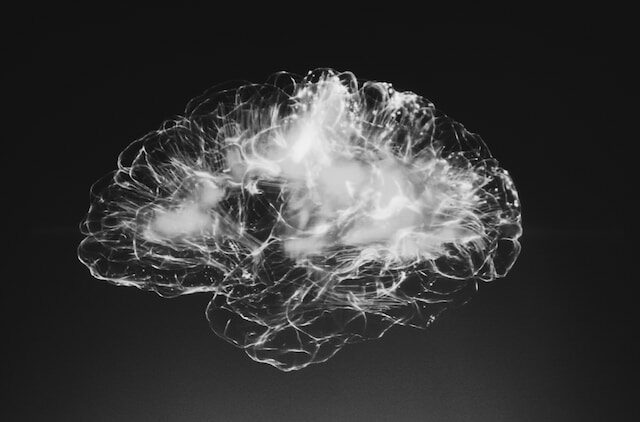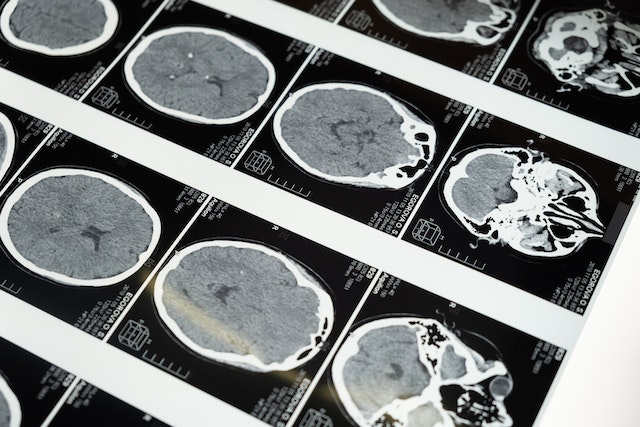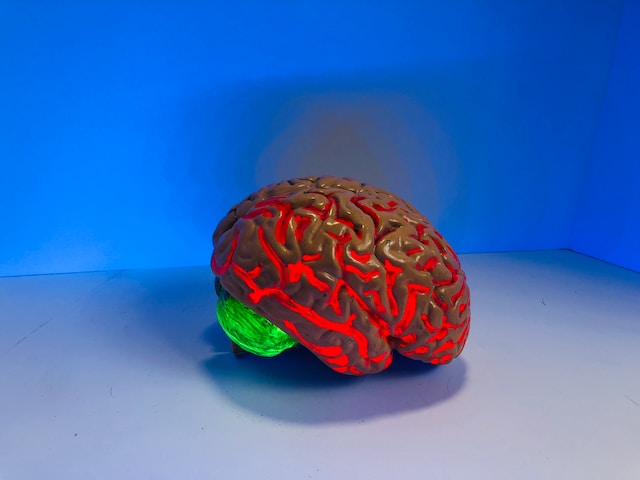Excitatory neurotransmitters are chemicals that increase the likelihood that a neuron will fire an action potential, while inhibitory neurotransmitters are chemicals that decrease the likelihood that a neuron will fire an action potential. In other words, excitatory neurotransmitters stimulate the brain, while inhibitory neurotransmitters slow it down.
What are neurotransmitters?
(Photo by Alina Grubnyak on Unsplash )

Neurotransmitters are chemicals that nerves use to communicate with each other. The two main types of neurotransmitters are inhibitory and excitatory. Inhibitory neurotransmitters keep nerves from firing too often, while excitatory neurotransmitters make nerves fire more frequently.
What are inhibitory neurotransmitters?
(Photo by cottonbro studio)

Inhibitory neurotransmitters are chemicals that act to decrease the activity of neurons. These neurotransmitters bind to receptors on the post-synaptic cell and result in the opening of chloride channels which causes an influx of chloride ions. This depolarizes the cell and hyperpolarizes it, making it less likely to reach threshold and fire an action potential. Inhibitory neurotransmitters can be found in both the central and peripheral nervous system. Some examples of inhibitory neurotransmitters include gamma-aminobutyric acid (GABA) and glycine.
What are excitatory neurotransmitters?
Excitatory neurotransmitters are neurotransmitters that increase the likelihood of a neuron firing. They do this by binding to receptors on the neuron and causing an influx of ions that make the cell more likely to reach threshold. Common excitatory neurotransmitters include glutamate and aspartate.
Inhibitory neurotransmitters Vs. Excitatory neurotransmitters – Key differences
Inhibitory and excitatory neurotransmitters are two types of chemicals in the brain that help regulate communication between neurons. The key differences between these two types of neurotransmitters are:
Function: Excitatory neurotransmitters increase the activity of neurons, making them more likely to fire an action potential and stimulate brain activity. In contrast, inhibitory neurotransmitters decrease the activity of neurons, making them less likely to fire an action potential and slowing down brain activity.
Effects: Excitatory neurotransmitters are associated with arousal, attention, and alertness, while inhibitory neurotransmitters are associated with relaxation, inhibition, and calmness.
Examples: Some examples of excitatory neurotransmitters include glutamate, acetylcholine, and norepinephrine, while examples of inhibitory neurotransmitters include GABA (gamma-aminobutyric acid), serotonin, and dopamine.
Receptors: Excitatory neurotransmitters bind to receptors on the postsynaptic neuron that are specific to them, called excitatory receptors, while inhibitory neurotransmitters bind to inhibitory receptors on the postsynaptic neuron.
Effects on neurotransmission: Excitatory neurotransmitters increase the likelihood of an action potential being generated, while inhibitory neurotransmitters decrease the likelihood of an action potential being generated.
The key difference between inhibitory and excitatory neurotransmitters lies in their function, effects, examples, receptors, and effects on neurotransmission.
How do inhibitory and excitatory neurotransmitters work?
Inhibitory and excitatory neurotransmitters work through different mechanisms to regulate communication between neurons in the brain.
Excitatory neurotransmitters, such as glutamate, bind to specific receptors on the postsynaptic neuron called ionotropic receptors, which open channels that allow positively charged ions, such as sodium and calcium, to enter the neuron. This influx of positively charged ions depolarizes the postsynaptic neuron, making it more likely to fire an action potential and transmit a signal to other neurons in the network.
In contrast, inhibitory neurotransmitters, such as GABA (gamma-aminobutyric acid), bind to specific receptors on the postsynaptic neuron called GABAergic receptors, which open channels that allow negatively charged ions, such as chloride, to enter the neuron or positively charged ions, such as potassium, to leave the neuron. This influx of negatively charged ions or efflux of positively charged ions hyperpolarizes the postsynaptic neuron, making it less likely to fire an action potential and reducing the probability of transmitting a signal to other neurons in the network.
The balance between excitatory and inhibitory neurotransmitters is important for regulating the activity of brain circuits and maintaining the proper functioning of the brain. Too much excitatory activity can lead to seizures or other hyperexcitability disorders, while too much inhibitory activity can lead to sedation or other hypoexcitability disorders. Thus, the careful regulation of inhibitory and excitatory neurotransmitters is critical for maintaining the delicate balance of brain activity.
What are some examples of inhibitory neurotransmitters?
There are several examples of inhibitory neurotransmitters in the brain, including:
GABA (gamma-aminobutyric acid): GABA is the main inhibitory neurotransmitter in the brain and is found throughout the central nervous system. It binds to specific receptors on postsynaptic neurons called GABA-A and GABA-B receptors, which open chloride channels and hyperpolarize the neuron, making it less likely to fire an action potential.
Glycine: Glycine is another inhibitory neurotransmitter that is found primarily in the spinal cord and brainstem. It binds to specific receptors on postsynaptic neurons called glycine receptors, which open chloride channels and hyperpolarize the neuron, reducing its excitability.
Serotonin: Serotonin is a monoamine neurotransmitter that acts as both an inhibitory and excitatory neurotransmitter, depending on the type of receptor it binds to. When it binds to 5-HT1 receptors, it inhibits neuronal activity, while when it binds to 5-HT2 receptors, it stimulates neuronal activity.
Dopamine: Dopamine is another monoamine neurotransmitter that acts as both an inhibitory and excitatory neurotransmitter, depending on the specific receptor it binds to. When it binds to D2 receptors, it inhibits neuronal activity, while when it binds to D1 receptors, it stimulates neuronal activity.
Endocannabinoids: Endocannabinoids are a class of lipid neurotransmitters that act as retrograde messengers, meaning that they are released by the postsynaptic neuron and bind to presynaptic receptors to inhibit neurotransmitter release. They are involved in a wide range of physiological and cognitive processes, including pain perception, appetite regulation, and mood.
These inhibitory neurotransmitters play important roles in regulating neuronal activity and maintaining the proper functioning of the brain.
What are some examples of excitatory neurotransmitters?
There are several examples of excitatory neurotransmitters in the brain, including:
Glutamate: Glutamate is the most abundant excitatory neurotransmitter in the brain and is involved in a wide range of functions, including learning and memory, sensory processing, and motor function. It binds to specific receptors on postsynaptic neurons called NMDA and AMPA receptors, which allow positively charged ions such as calcium and sodium to enter the neuron and depolarize it, making it more likely to fire an action potential.
Acetylcholine: Acetylcholine is an excitatory neurotransmitter that is involved in a wide range of functions, including muscle contraction, attention, learning, and memory. It binds to specific receptors on postsynaptic neurons called nicotinic and muscarinic receptors, which allow positively charged ions such as sodium and calcium to enter the neuron and depolarize it, making it more likely to fire an action potential.
Norepinephrine: Norepinephrine is a monoamine neurotransmitter that is involved in arousal, attention, and mood regulation. It binds to specific receptors on postsynaptic neurons called alpha and beta adrenergic receptors, which increase the activity of intracellular enzymes and second messengers that enhance excitability and stimulate neuronal firing.
Dopamine: Dopamine is a monoamine neurotransmitter that is involved in reward, motivation, and motor function. It binds to specific receptors on postsynaptic neurons called D1 and D5 receptors, which activate intracellular signaling pathways that increase neuronal excitability and stimulate the firing of action potentials.
Histamine: Histamine is an excitatory neurotransmitter that is involved in allergic responses, inflammation, and wakefulness. It binds to specific receptors on postsynaptic neurons called H1 and H2 receptors, which activate intracellular signaling pathways that increase neuronal excitability and stimulate the firing of action potentials.
These excitatory neurotransmitters play important roles in regulating neuronal activity and maintaining the proper functioning of the brain.
Do inhibitory and excitatory synapses use the same neurotransmitters?
No, inhibitory and excitatory synapses do not use the same neurotransmitters. Inhibitory synapses typically use neurotransmitters that open ion channels that allow negatively charged ions such as chloride (Cl-) to enter the neuron, causing hyperpolarization and making the neuron less likely to fire an action potential. The primary inhibitory neurotransmitter in the brain is gamma-aminobutyric acid (GABA), but other neurotransmitters such as glycine and serotonin can also act as inhibitory neurotransmitters.
Excitatory synapses, on the other hand, typically use neurotransmitters that open ion channels that allow positively charged ions such as sodium (Na+) and calcium (Ca2+) to enter the neuron, causing depolarization and making the neuron more likely to fire an action potential. The primary excitatory neurotransmitter in the brain is glutamate, but other neurotransmitters such as acetylcholine, dopamine, and norepinephrine can also act as excitatory neurotransmitters.
Thus, inhibitory and excitatory synapses use different neurotransmitters and different ion channels to regulate the activity of neurons.
Featured Image By – Natasha Connell on Unsplash








